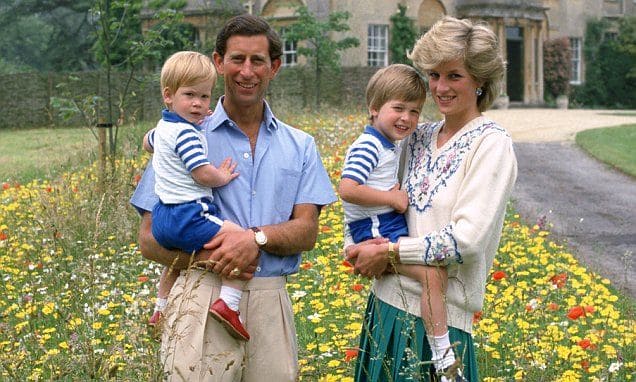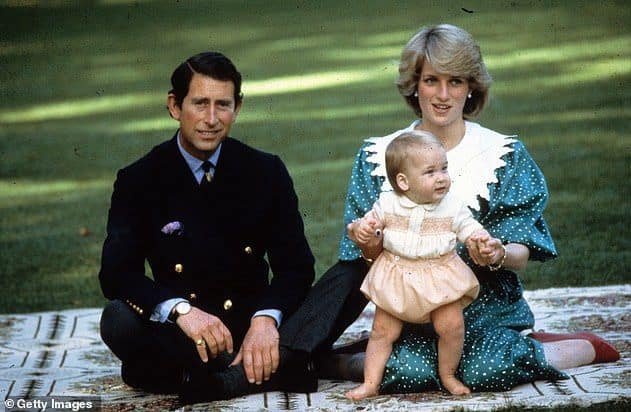Princess Diana’s personality type played a key role in shaping her journey from royal family member to global icon of compassion, vulnerability, and humanitarianism.
This article explores how her unique character traits influenced her relationships, public image, and lasting legacy.
Key Takeaways
- Princess Diana’s compassionate and emotionally open personality played a central role in shaping her public image and humanitarian legacy.
- She challenged royal traditions by prioritizing human connection, vulnerability, and authenticity, earning her the title “the people’s princess.”
- Her work in causes like AIDS awareness, landmine eradication, and mental health advocacy reflected a deep commitment to social impact beyond ceremonial duties.
- Diana’s legacy continues to influence the royal family and inspire global conversations about empathy, authenticity, and service.
Who Was Princess Diana?

Credits: @dailymail / Pinterest
Princess Diana, born Diana Frances Spencer on July 1, 1961, remains one of the most beloved figures in modern history.
Her journey from a shy, aristocratic nursery assistant to a global humanitarian and prominent member of the British royal family captivated millions around the world.
She became Princess Diana when she married Prince Charles, heir to the British throne, on July 29, 1981, in a globally televised event that seemed to fulfill every fairy tale ideal.
Why She Was Called the People’s Princess
Diana earned the affectionate title “the people’s princess” due to her exceptional ability to connect with people from all walks of life, regardless of their status, background, or struggles.
Her warmth, compassion, and willingness to break traditional royal protocols—by hugging children with AIDS, shaking hands with leprosy patients, and visiting homeless shelters—were unprecedented for a member of the royal family.
Her approachability and authenticity made her feel like a relatable figure rather than a distant royal, ultimately solidifying her legacy as “the people’s princess.”
Her Place in the British Royal Family
Despite her fairytale wedding and public image, Princess Diana’s position within the British royal family was complex.
She was expected to conform to the monarchy’s strict and often rigid traditions while living under intense media scrutiny.
Although her marriage to Prince Charles became increasingly strained, Diana continued her humanitarian work, maintained a significant role within the family, and helped shape a more modern image of the monarchy—until her tragic death in 1997.
What Is Personality Type?
Explanation of Enneagram Type and DISC Profiles
Understanding personality types is essential when analyzing public figures like Princess Diana. Frameworks such as the Enneagram and DISC profiles offer structured insights into how individuals behave, communicate, and relate to others.
The Enneagram system categorizes personalities into nine distinct types, each defined by core motivations, fears, and paths for growth. For example, Type Two—known as The Helper—often describes nurturing, empathetic individuals driven by a desire to be loved and needed.
Similarly, DISC profiles classify personalities into four main styles: Dominance, Influence, Steadiness, and Conscientiousness. This model helps explain how people engage in work, social, and family settings, highlighting both strengths and areas for development.
How Personality Types Help Us Understand People
Applying personality frameworks like the Enneagram and DISC profiles allows us to look beyond public personas and understand why individuals behave the way they do—under pressure, in public, and in private.
In the case of Princess Diana, these tools offer insight into how her personality traits shaped her distinctive public image, her charitable work, and her relationships within the British royal family.
Diana’s Personality Traits and Public Image

Credits: @fashionmagazine / Pinterest
Key Personality Traits of Diana
Princess Diana exhibited empathy, compassion, and sensitivity—qualities closely aligned with Enneagram Type Two.
She was deeply concerned with the well-being of others, as seen in her hands-on approach to humanitarian and charitable work.
Her emotional intelligence and intuition enabled her to recognize others’ needs and respond with genuine care, making her a source of comfort and hope during difficult times.
Her Unique Public Persona
Diana’s unique public persona blended vulnerability with strength. Unlike many royals who maintained a formal and distant image, she openly shared her struggles with mental health and the challenges she faced within royal life, making her more relatable to the public.
Her authenticity, combined with her willingness to express emotions openly, set her apart and endeared her to people around the world.
Influence of Her Fashion Choices
Princess Diana’s fashion choices were a key part of her public persona. Whether she was wearing a glamorous gown at a charity gala or casual attire during a hospital visit, her style conveyed both accessibility and modernity.
Her wardrobe not only influenced global fashion trends but also became a symbol of her independence, further strengthening her bond with the public.
Princess Diana’s Humanitarian Work

Credits: @townandcountrymag / Pinterest
Overview of Her Humanitarian Work and Charity Work
Princess Diana used her platform within the British royal family to champion humanitarian causes around the world.
She supported numerous charities and consistently advocated for marginalized and vulnerable groups, including children, the homeless, and individuals affected by landmines.
Her involvement extended far beyond photo opportunities, reflecting a deep and genuine commitment to compassion and social change.
Focus on AIDS Awareness and Other Causes
One of Diana’s most notable contributions was her AIDS awareness campaign during a time of widespread fear and stigma.
Her simple yet powerful act of shaking hands with an AIDS patient—without wearing gloves—challenged public misconceptions and demonstrated both compassion and courage.
Beyond AIDS, she also championed causes such as leprosy awareness, landmine eradication, and mental health, consistently embodying the values of true humanitarianism.
Princess Diana Compared to Other Royals

Credits: @dailymail / Pinterest
Relationship with Prince Charles
Princess Diana’s marriage to Prince Charles was initially viewed as a union that would reinforce the royal image, but it soon revealed stark differences in their personalities and life goals.
Charles, often characterized as reserved and duty-driven, contrasted sharply with Diana’s emotional openness and deep need for connection.
Their struggles underscored how differing personality types can create tension—even within the highly structured environment of the British royal family.
How Her Personality Differed from Typical Royals
Traditional members of the British royal family often maintain composure and adhere strictly to royal protocols in order to preserve the monarchy’s dignity.
In contrast, Diana’s deep need for emotional connection—paired with her humanitarian focus—often led her to break with tradition, whether by kneeling to speak with children or embracing those in need.
Her personality prioritized human connection over formality, creating tension within the rigid expectations of royal life.
Role Within Royal Protocols and the British Throne
Despite her challenges, Diana navigated her role with grace, redefining what it meant to serve the British throne.
Her dedication to charitable work and her willingness to challenge rigid royal protocols enabled her to build bridges between the monarchy and the public.
Through her actions, she showed that empathy and accessibility could coexist with the responsibilities of royal duty.
Why Diana Stands Out
Impact on the Royal Family and Public
Princess Diana’s presence in the British royal family brought lasting changes to how the monarchy engaged with the public. Her insistence on emotional openness and visibility redefined expectations for royal figures.
Through her genuine connection with people and her willingness to show vulnerability, Diana sparked important conversations about mental health and the pressures faced by those in the public eye, reshaping public perceptions of the monarchy.
Her Lasting Indelible Mark as a Cultural Icon
Princess Diana’s unique public persona and dedication to humanitarian causes solidified her status as a cultural icon. Her style, compassion, and willingness to address social issues have inspired generations.
Her legacy lives on through her sons, Prince William and Prince Harry, who continue to honor her by championing causes she cared deeply about—including AIDS awareness, mental health, and the eradication of landmines.
Diana’s influence extends far beyond the British Isles, inspiring millions worldwide to engage in humanitarian work and advocate for empathy and social justice. Her legacy is not defined solely by her fashion choices or tragic story, but by her example of using privilege to create positive change.
Conclusion
Princess Diana’s personality shaped her unique public persona, compassionate approach to humanitarian work, and distinct role within the British royal family. Her warmth, emotional intelligence, and commitment to charitable causes set her apart from typical royals who often adhere strictly to protocol.
Despite challenges in her marriage and royal life, Princess Diana built a deep connection with the public and became known for her commitment to causes like AIDS awareness.
She changed how people viewed the British monarchy, using her role to highlight important global issues. Diana’s life shows the power of being authentic, compassionate, and courageous. By staying true to herself, she inspired others to make a difference with empathy and purpose.
